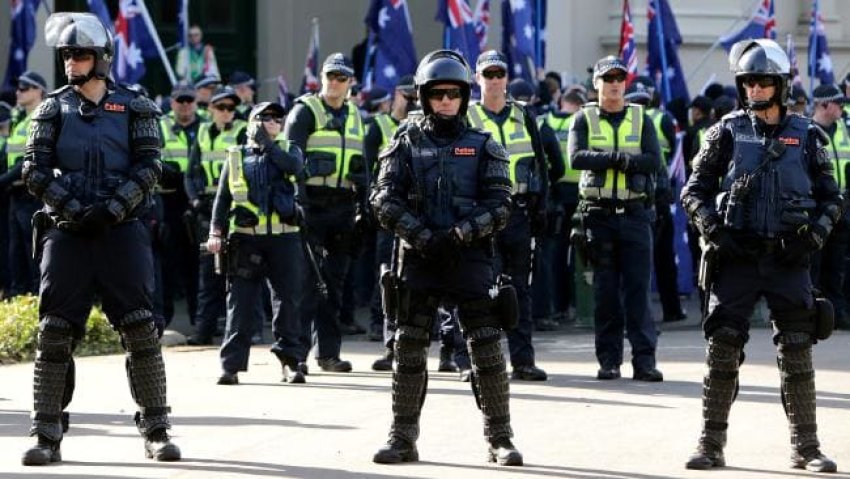
Talk has once again resurfaced about extending police powers and militarising police forces after a violent brawl outside a pub in Collingwood, Victoria, earlier this month. But many are asking just how far governments are willing to go in sacrificing freedoms for an ill-conceived notion of being “tough on crime”.
For several decades we have seen a steady militarisation of police forces throughout the Western world. Australia is not immune to this trend.
Victorian state governments have invested heavily in specialist police forces since 2009, when the Operations Response Unit was established.
In December 2016, the Labor state government bulked up the Public Order Response Team (PORT) to bolster its capacity and ability to rapidly respond to incidents involving “hostile crowds”.
In March, Victoria Police confirmed it was considering equipping police with military-grade rifles to deal with incidents such as sieges and terrorist attacks.
On top of this, Victoria’s Legislative Assembly passed draconian anti-association laws on September 7, which will give police excessive powers to move on children as young as 14 for simply congregating in a group.
Police forces already inappropriately target minority communities such as indigenous peoples and refugee and migrant communities. A militarised police force, combined with these new “anti-association” powers, will only exacerbate this targeting.
These disturbing shifts in policing have set the scene for rising tensions between communities and police — and increased the likelihood of potentially deadly outcomes.
Yet, despite police enthusiasm for military-grade equipment and excessive powers, research shows that militarised police forces have no positive effect on safety or the number of incidents of terror or violence.
What the militarisation of police forces does achieve, however, is an erosion of the relationship between police and the communities they are meant to serve.
Unsurprisingly, it is hard to foster a “community-oriented” attitude when police training is patterned after military boot camps and heavily armed officers are clad in darkened military-style uniforms and armour.
Anti-association laws and beefed up police powers also tend to further erode civil liberties, including the right to non-violent protest.
In the United States, the effect of blurring the lines between the military and police forces is clear.
US police forces are increasingly being equipped with military resources, including armoured personnel carriers, assault rifles and flash grenades. Specialist SWAT teams are being given ever-increasing reach and power.
The 2014 Ferguson, Missouri, riots, that broke out after a white police officer shot dead 18-year-old Black man Michael Brown, led police to sitting atop armoured carriers with 50-caliber machine guns pointing at protesting crowds.
We must fight the normalisation of a militarised police force. The effects of its normalisation on US communities, where heavily armoured vehicles roll through streets and police protests, are evident.
This is not normal in a free and democratic country.
Let’s ensure our governments know this by voicing our objections loud and clear.